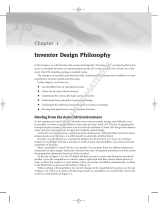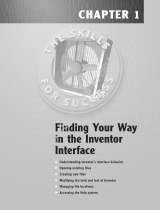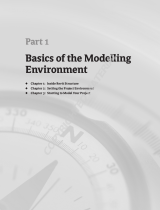
Autodesk
®
Inventor
™
software products are the best
choice for AutoCAD
®
software users who want to add
the power of D without compromising investments in
D design data and AutoCAD technical expertise.
Add the power of D with the company that brought you D.
As the creators of AutoCAD software, Autodesk
understands your design process and created
Inventor to make the process of adding D as easy
as possible. No company is more focused than
Autodesk on helping designers create and bring
better products to market faster at less cost.
Inventor gives designers the freedom to integrate
existing D designs into their D design environment,
making it easy to reuse and share both AutoCAD
®
DWG™ files and D design data with other Autodesk
manufacturing applications and their users. With
innovative approaches to accelerate and simplify
the concept-to-manufacturing process, it’s no
wonder Inventor has outsold all competitors for
the sixth consecutive year.
The Right Tools for Your Design Process
The Inventor product line provides a comprehensive
and integrated set of design tools for D design
and documentation, creating routed systems,
and validating designs. Inventor not only includes
data management software and AutoCAD
®
Mechanical for D drawing and detailing, but
also delivers enhanced D productivity while
preserving your company’s D engineering
designs through true DWG interoperability. It
provides access to intelligent engineering
content and oers the fastest way to generate
production-ready drawings to help designers
quickly go from concept to production.
Specialized Tools for Your Design Needs
Save time and reduce prototyping costs with
specialized tools that help engineers to create
and validate routed systems, including tube, pipe,
or wire harness designs. Autodesk
®
Inventor™
Professional software provides the tools to create
complete products, including complex routed
system designs, while automatically creating
accurate bills of materials (BOMs) and complete
manufacturing documentation.
Validate designs before they are built. With
Autodesk Inventor Professional, engineers
can simulate the dynamic behavior of a design
throughout its full operating cycle and accurately
predict operating loads and accelerations. In
addition, the integrated Finite Element Analysis
(FEA) tool helps engineers analyze designs and
avoid stress-related field failures.
With dierent product configurations that oer
specific levels of functionality, Inventor is the best
choice for AutoCAD users in manufacturing.
Contents
Digital Prototypes .
....................................... 3
Dynamic Simulation .
...................................5
Stress Analysis .
.............................................7
Tube and Pipe Design..................................9
Cable and Harness Design .
...................... 12
AutoCAD Integration .
............................... 16
Part Design .
................................................. 18
Assembly Design .
...................................... 22
Design and Manufacturing
Documentation .
........................................ 26
Collaboration and Communication .
..... 28
Customization and Automation .
............ 31
Learning Resources .
..................................33
Learn More or Purchase .
......................... 34
2
www.rand.com/imaginit/autodeskinventor


























